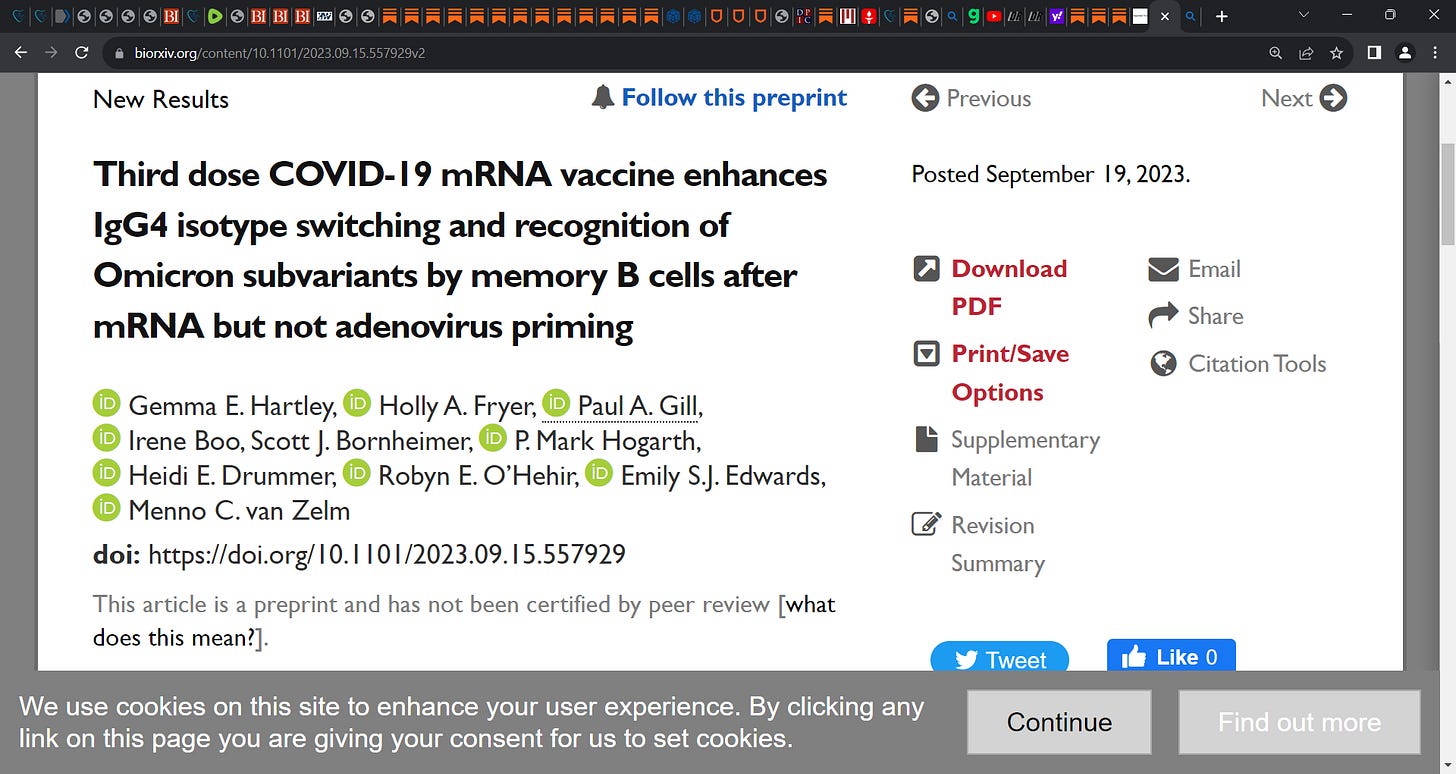https://www.biorxiv.org/content/10.1101/2023.09.15.557929v2
Researchers ‘examined the effects of homologous (mRNA/mRNA) and heterologous (adenoviral vector/mRNA) vaccination on antibody and memory B cell (Bmem) responses against ancestral and Omicron subvariants.
Healthy adults who received primary Pfizer BNT162b2 (mRNA) (n=18) or ChAdOx1 (vector) (n=25) vaccination were sampled 1-month and 6-months after their 2nd and 3rd dose (homologous or heterologous) vaccination. Recombinant spike receptor-binding domain (RBD) proteins from ancestral, Omicron BA.2 and BA.5 variants were produced for ELISA-based serology, and tetramerized for immunophenotyping of RBD-specific Bmem.
Dose 3 boosters significantly increased ancestral RBD-specific plasma IgG and Bmem in both cohorts. Up to 80% of ancestral RBD-specific Bmem expressed IgG1+.
IgG4+ Bmem were detectable after primary mRNA vaccination, and expanded significantly to 5-20% after dose 3, whereas heterologous boosting did not elicit IgG4+ Bmem.
Recognition of Omicron BA.2 and BA.5 by ancestral RBD-specific plasma IgG increased from 20% to 60% after the 3rd dose in both cohorts. Reactivity of ancestral RBD-specific Bmem to Omicron BA.2 and BA.5 increased following a homologous booster from 40% to 60%, but not after a heterologous booster.’
We are left to ask, why is there an expansion of IgG4+ Bmem after mRNA priming? Immune tolerance. Why? What are the implications of this to the vaccinee?
Click this link for the original source of this article.
Author: Dr. Paul Alexander
This content is courtesy of, and owned and copyrighted by, https://palexander.substack.com and its author. This content is made available by use of the public RSS feed offered by the host site and is used for educational purposes only. If you are the author or represent the host site and would like this content removed now and in the future, please contact USSANews.com using the email address in the Contact page found in the website menu.










